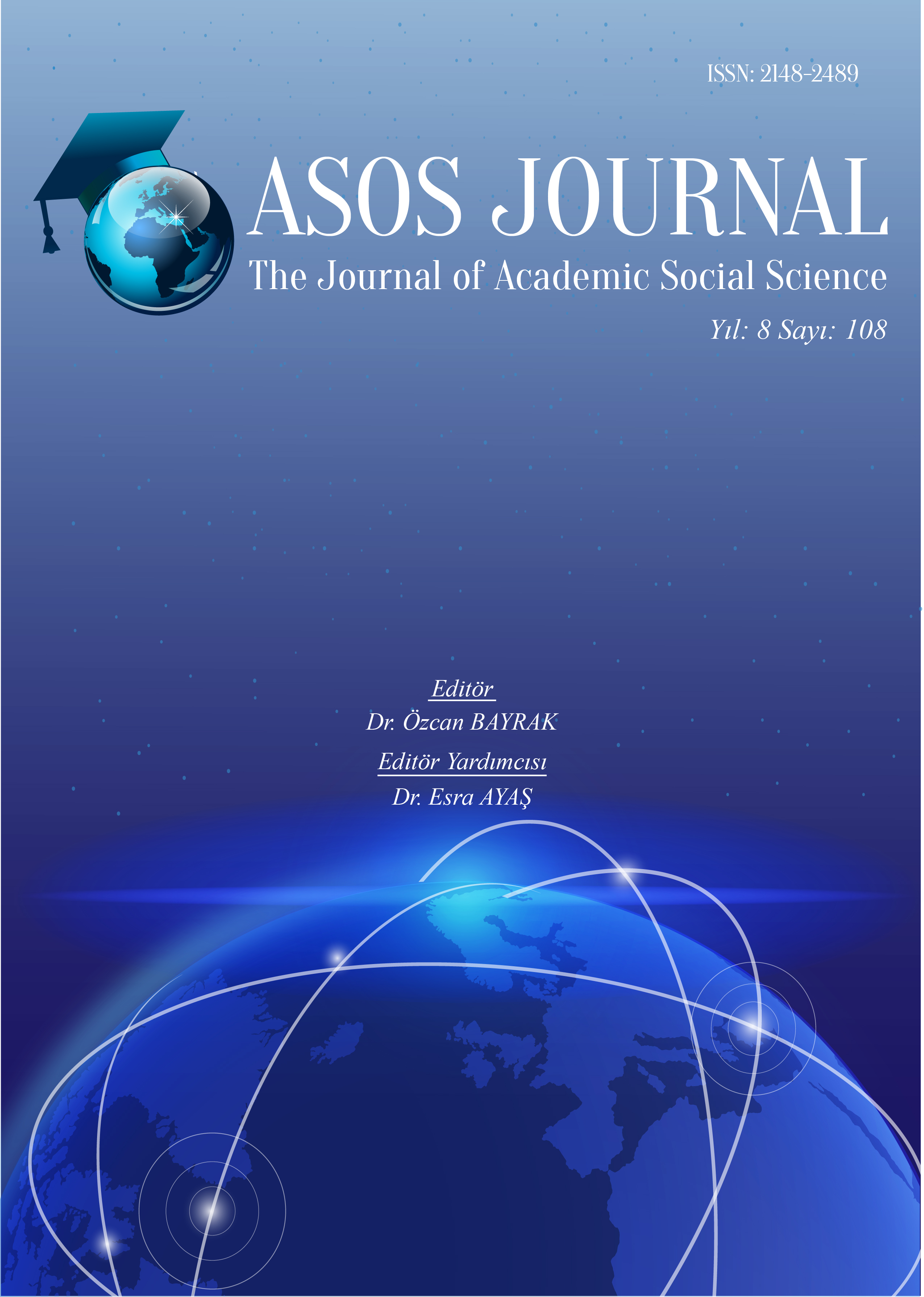Author :
Abstract
20. yüzyılda, küreselleşme ile birlikte yaşanan hızlı değişimler özellikle örgüt-çevre ilişkisini ve bu ilişki içerisinde örgütlerin konumunu önemli ölçüde etkilemiştir. İletişim teknolojilerinin hızla geliştiği, her alanda değişimin çok hızla gerçekleştiği, bilgi odaklı bir çağdayız. 21. yüzyılda değişimlerin ve yeni ekonomilerin zorunlu kıldığı yeni işletmeler geleneksel işletmelerle karşılaştırıldığında; bireysel gelişime daha fazla odaklanma; inovasyon ve değişime daha çok odaklanma; işletmelerin uzun dönem yararı için işletmedeki tüm yeteneklerin bütünleştirilmesine daha fazla önem verme gibi konuların öne çıktığı görülmektedir. Günümüzün değişen koşullarında artık klasik liderlik anlayışının yetersizliği tartışılmaktadır. Bu çalışmada 21. Yüzyıl liderinde aranan bireysel bazı karizmatik özellikler yanı sıra, tarafımızca yönetim bilimlerinde yeni bir yaklaşım olarak ortaya atılan “Zoomer” yaklaşımı ele alınmıştır.
Keywords
Abstract
The rapid changes in the 20th century with globalization have particularly affected the organization-environment relationship and the position of organizations in this relationship. We are in an information-oriented era where communication technologies are developing rapidly and change in all areas is very fast. Compared to traditional businesses, new businesses required by changes and new economies in the 21st century; greater focus on individual development; more focus on innovation and change; it seems that issues such as giving more importance to the integration of all the talents in the business come to the fore for the long-term benefit of the enterprises. In today’s changing conditions, the insufficiency of classical leadership is discussed. In this study, besides some of the individual charismatic features sought in the 21st century leader, the “Zoomer” approach, which was put forward by us as a new approach in management sciences, was discussed.
Keywords
- Başaran, İbrahim, E. (1991), Örgütsel Davranış - İnsanın Üretim Gücü, Gül Yayınevi, Ankara.
- Blanchard, Ken, (2007), Leading at a Higher Level, Revised Edition, Prentice Hall, NJ.
- Blanchard K.; Spencer, Johnson, (1982), One Minute Manager, William Morrow & Co., New York, NY.
- Brown, Tim, (2009), Change by Design: How Design Thinking Transforms Organizations and Inspires Innovation. Harper Collins Publishers, New York, NY.
- Damanpour, Fariborz, (1991), Organizational Innovation: A Meta – Analysis Of Effects Of Determinants and Moderators, Academy of Management Journal, Vol. 34/No.3.
- Emiroğlu, Akif, (2002), Ticari Açıdan Yatırım Projeleri: Planlanması, Hazırlanması, Finansmanı, Yönetimi, Değerlendirilmesi ve Teşviki, Ekin Kitabevi, Bursa.
- Emiroğlu, Akif, (2010), Ticari Açıdan Yatırım Projeleri: Planlanması, Hazırlanması, Finansmanı, Yönetimi, Değerlendirilmesi ve Teşviki, 2. Baskı, Ekin Kitabevi, Bursa.
- Emiroğlu, Akif, (2015), Kalite Kontrol ve Yönetimi, Ders Notları, Zonguldak.
- Emiroğlu, Akif, (2018), İnovasyon ve Teknoloji Yönetimi, Ekin Kitabevi, Bursa.
- Firestien, Roger, L., (2004). Leading on the Creative Edge: Gaining Competitive Advantage Through The Power Of Creative Problem Solving. Pinon Press, Colorado Springs, CO.
- Goldsmith, Marshall, (2007), What Got You Here Won’t Get You There. Hyperion, New York, NY.
- Katzenbach, John, R., (1996), Real Change Leaders. Three Rivers Press, New York, NY.
- Keenan, Derek, (2010), Developing Education: 5 Traits of the 21st Century Educational Leadership. Retrieved from: http://www.mrkeenan.com/?p=512
- Koontz, Harold, (1967), Toward a Unified Theory of Management, Textbook Binding, 1st Edition, McGraw Hill.
- Koontz, H.; O’Donnel, C.; Weihrich, H:, (1980), Management, International Student Edition, McGraw-Hill Kogakusha, Ltd., Tokyo, Japan.
- Li, Charlene, (2010), Open Leadership: How Social Technology Can Transform The Way You Lead. Jossey-Bass. San Francisco, CA.
- Maxwell, John, C. (2007), The 21 Irrefutable Laws of Leadership Workbook. Nashville, TN: Thomas Nelson, Inc.
- Michael, Stephen, R. and Jones Halsey, R. (1973), Organizational Management: Concepts and Practice, Intext Educational Publishers, New York, NY.
- Naisbitt, John, (1982,. Megatrends: Ten New Directions Transforming Our Lives. Grand Central Publishing, New York, NY.
- O’Reilly, Charles, A., (2010), How Leadership Matters: The effects of leaders’ alignment on strategy implementation. The Leadership Quarterly, 21(1), 104-113.
- Pink, Daniel, H., (2005), A Whole New Mind: Moving from the information age to conceptual age. New York, NY: Riverhead Publishing.
- Puccio, G. J.; Murdock, M. C.; & Mance, M., (2007), Creative Leadership: Skills that drive change. Thousand Oaks, CA: Sage Publications, Inc.
- Schutlz, Howard, (1997), Pour Your Heart into it: How Starbucks built a company one cup at a time. New York, NY: Hyperion.
- Semmel, M. (2009), Museums, Libraries, and 21st Century Skills (IMLS-2009- NAI-01). Washington, D.C: Institute of Museum and Library Services. Retrieved from Library of Congress Cataloging-in-Publication Database.
- White, Randall. P.; Hodgson, Philip, & Crainer, Stuart, (1996). The Future of Leadership: Riding the corporate rapids into 21st century leadership. Pitman Publishing, London, England.
